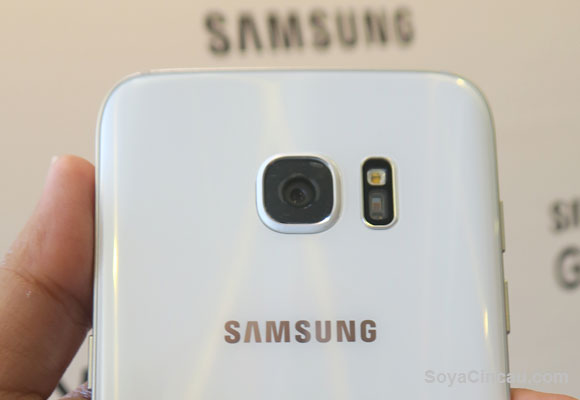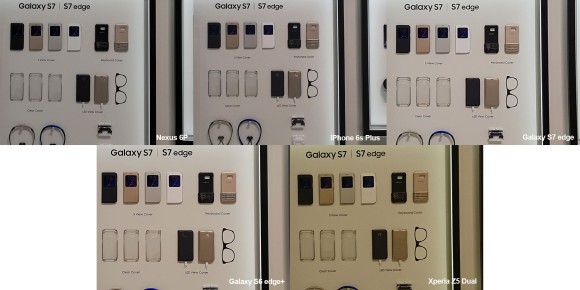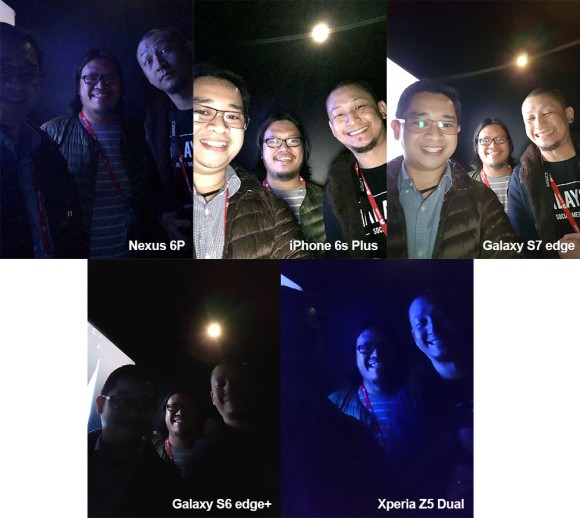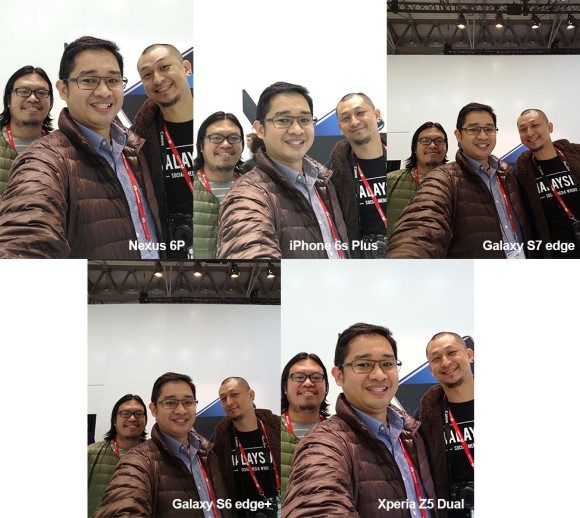Bam! Mobile World Congress 2016 passed by like in just a blink of the eye and now we’re suffering from post-congress withdrawals. Not without good reason, by the way. Three (big) smartphone makers released their flagships for this year including the Samsung Galaxy S7 and S7 edge. On a less than positive note, it’s rather sad that we won’t be getting the standard Galaxy S7 in Malaysia.
Although we pretty much knew everything about the two smartphones prior to the South Korean manufacturer taking the MWC floor, we didn’t know how good the camera on the follow-up to the Galaxy S6 flagships would be.
We were eager to find out so we pit the edgy Samsung number against other formidable smartphone cameras.
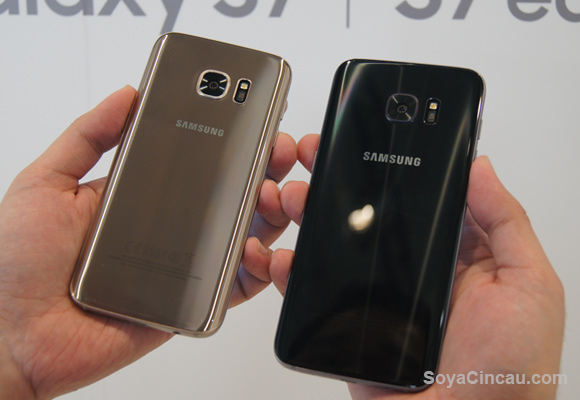
It’s never easy when you need to keep innovating and refining your device. Flagship smartphones and their cameras have come a long way from the feature phones of old. In the present, they’re also just as likely to replace your point and shoot camera in most cases.
Samsung has made big leaps in the last couple of years and they’ve earned their place in the smartphone camera winners circle. We saw the great photo-taking ability of the Galaxy S6 and S6 edge last year, even making Samsung keep the camera sensors on the Galaxy Note5 and S6 edge+.
Heck, the stylus-toting Samsung smartphone even grabbed the most positive attention on our Nexus 6P camera comparison. So did Samsung manage to replicate one of the best cameras for a third time running?
We were really keen to see how the Galaxy S7 edge would fair when put against the Nexus 6P, iPhone 6S Plus, Sony Xperia Z5 Dual and the Galaxy S6 edge+.
But before we get to the photos, let’s talk about what the five cameras we tested have to offer.
[nextpage title=”Smartphone camera specs overview”]
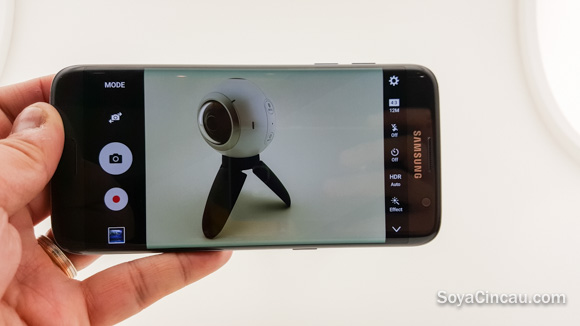
On the Galaxy S7 edge, you’ll find a 12-megapixel Dual Pixel sensor that has a larger f/1.7 aperture lens. Combine that with a larger 1.4 micron pixels, this translates up to 95% brighter photos even in demanding low light situations.
That Dual Pixel name isn’t just marketing mishmash, for it’s an upgrade to Phase Detection Auto Focus technology; all pixels in the frame are focused on the image concurrently. Its rear sensor gets optical image stabilisation on board too.
On the front, they have retained a 5-megapixel camera but it also gets a faster f/1.7 lens. Samsung didn’t put a front-facing flash module but when you select the “flash” option when taking selfies, the screen will light up brightly to provide a software-based flash.
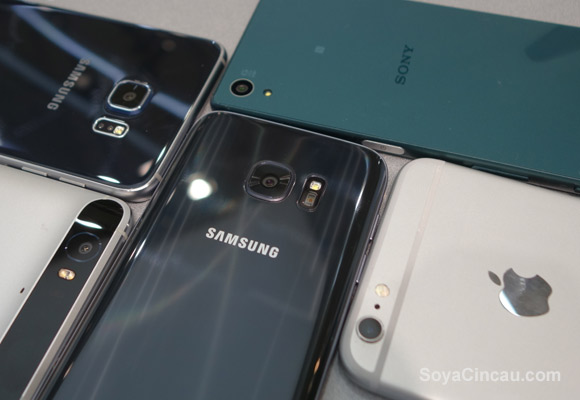
Nexus 6P
For the competition, we first start with the Nexus 6P. The collaborative effort from Google and Huawei unsurprisingly uses a Sony lens – after all, the Japanese company have a track record of making great camera sensors.
The rear is listed at 12.3-megapixels and it shows off a 1.5µm pixel size that makes up for the lack of optical image stabilisation. Even though it lacks OIS, the f/2.0 aperture lens has proven itself to take rather good low-light photos.
There’s also PDAF and laser autofocus hiding in that stormtrooper visor on the back. Its front facing lens is a worthy 8-megapixel f/2.4 sensor with a 1.4µm pixel size. Both of cameras on the Nexus 6P are capable of HDR+.
Galaxy S6 edge+
One of the best smartphone cameras of the old generation has a 16-megapixel Sony IMX240 sensor with a single-LED flash. That’s mated to a f/1.9 aperture lens. OIS and HDR are also available.
Flipping to the front, you’ll see a 5-megapixel lens with the same aperture as the rear but it takes images at a wide 120-degree wide angle. You’ll find HDR here too.
iPhone 6s Plus
Apple’s iPhone 6s Plus has a 12-megapixel iSight rear camera with a 1.22µm pixels and equipped with OIS. It also has an aperture of f/2.2, dual-tone LED flash and HDR. If you love animated photos (most people do) the iPhone has a software option that allows Live Photos.
The iPhone’s front sensor is a decent 5-megapixel lens that has the same aperture rating. Retina Flash aka Apple’s version of software-based flash is also available for any front-facing shots.
Sony Xperia Z5 Dual
Here’s where camera specifications can fool the best of us (including DXoMark). This smartphone out of Japan has a whopping 23-megapixel wide-angle rear sensor and a f/2.0 aperture lens. While the resolution of its images it takes are very large, Sony still hasn’t got the imaging software down right.
Supporting its main lens are PDAF, a singular rear LED-flash, and HDR.
On the other side, there’s a 25mm wide-angle 5.1-megapixel lens.
[nextpage title=”Galaxy S7 edge Photo Comparison”]
Scene 1 (rear-facing camera)
Note: Please click on the images to view the enlarged version.
Original photos: Nexus 6P, iPhone 6s Plus, Galaxy S7 edge, Galaxy S6 edge+, and Xperia Z5 Dual
Scene 2 (rear-facing camera)
Original photos: Nexus 6P, iPhone 6s Plus, Galaxy S7 edge, Galaxy S6 edge+, and Xperia Z5 Dual
We also tried out the optional Tele and Wide angle add-on lens from Samsung. You can check out the difference below:
Original photos: Wide angle lens and Telephoto lens
Scene 3 (rear-facing camera)
Original photos: Nexus 6P, iPhone 6s Plus, Galaxy S7 edge, Galaxy S6 edge+, and Xperia Z5 Dual
Scene 4 (rear-facing camera)
Original photos: Nexus 6P, iPhone 6s Plus, Galaxy S7 edge, Galaxy S6 edge+, and Xperia Z5 Dual
Scene 5 (rear-facing camera shot in low light without flash)
Original photos: Nexus 6P, iPhone 6s Plus, Galaxy S7 edge, Galaxy S6 edge+, and Xperia Z5 Dual
Scene 6 (front-facing camera in low light)
Original photos: Nexus 6P, iPhone 6s Plus, Galaxy S7 edge, Galaxy S6 edge+, and Xperia Z5 Dual
You’ll notice here that the iPhone 6s Plus and Galaxy S7 edge are a lot brighter, that’s because of the “Display Flash” technology. The other three devices have no such LED-flash on the front.
Scene 7 (front-facing camera in good lighting)
Original photos: Nexus 6P, iPhone 6s Plus, Galaxy S7 edge, Galaxy S6 edge+, and Xperia Z5 Dual
You can view the original unedited images by clicking on the device’s name listed in the links below each image.
Does the Galaxy S7 edge’s camera tick all the boxes of a great smartphone camera? Or does one of the competitors still have your vote? Let us know in the comments below!

